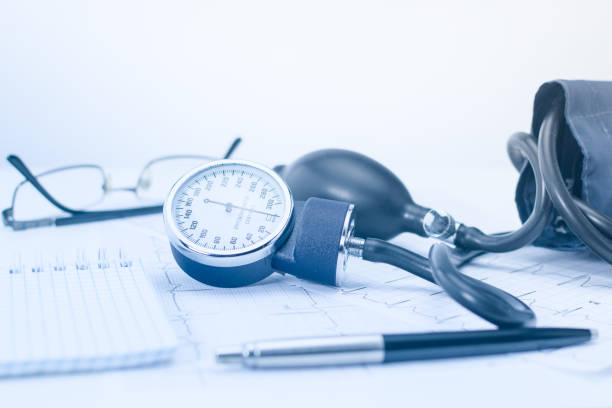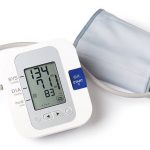The ONE organ responsible for high blood pressure.
Ideal Blood Pressure

What is blood pressure?
Blood pressure is the force that moves blood through the circulatory system. It is an important force because oxygen and nutrients would not be pushed around the circulatory system to nourish tissues and organs without blood pressure.
Blood pressure is also vital because it delivers white blood cells and antibodies for immunity and hormones such as insulin.
Just as important as providing oxygen and nutrients, the fresh blood that gets delivered is able to pick up the toxic waste products of metabolism, including the carbon dioxide we exhale with every breath and the toxins we clear through the liver and kidneys.
Blood itself carries a number of other properties, including its temperature. It also carries one of the defenses against tissue damage, the clotting platelets that prevent blood loss following injury.
But what exactly causes blood to exert pressure in the arteries? Part of the answer is simple — the heart creates blood pressure by forcing out blood when it contracts with every heartbeat. Blood pressure, however, cannot be created solely by a pumping heart.
Ranges of normal blood pressure readings
The National Institutes of Health and the American Heart Association (AHA) cite normal blood pressure to be below 120 mm Hg systolic and 80 mm Hg diastolic. However, blood pressure changes naturally for many reasons. Older 2003 guidelines state that for blood pressures above a figure of 115/75 mm Hg, every rise of 20/10 mm Hg doubles the risk of cardiovascular disease. The overall guidelines for high blood pressure received an update in November 2017. They allow for earlier intervention. Since 2017, the AHA has advised that people with high blood pressure should receive treatment at 130/80 mm Hg rather than 140/90 mm Hg. They also removed the “prehypertension” category between 120-139/80-89 mm Hg. A blood pressure reading of 140/90 mm Hg now qualifies as stage II hypertension and not stage I, as it used to be. This category now forms two separate ranges:- elevated blood pressure, from 120-129/less than 80 mm Hg
- stage I hypertension, from 130-139/80-89 mm Hg
The function of blood pressure in the body
Circulation is similar to a highly sophisticated form of plumbing — blood has “flow,” and arteries are “pipes.” A basic law of physics gives rise to blood flow, and this law also applies in a garden hose pipe.
Blood flows through the body because of a difference in pressure.
Blood pressure is highest at the start of its journey from the heart — when it enters the aorta — and it is lowest at the end of its journey along progressively smaller branches of arteries. That pressure difference is what causes blood to flow.
Arteries affect blood pressure in a similar way to the physical properties of a garden hose pipe affecting water pressure. Constricting the pipe increases pressure at the point of constriction.
Without the elastic nature of the artery walls, for example, the pressure of the blood would fall away more quickly as it is pumped from the heart.
While the heart creates the maximum pressure, the properties of the arteries are just as important to maintaining it and allowing blood to flow throughout the body.
The condition of the arteries affects blood pressure and flow, and narrowing of the arteries can eventually block the supply altogether, leading to dangerous conditions including stroke and heart attack.
Blood pressure measurement
The device used to measure blood pressure is a sphygmomanometer. It consists of a rubber armband — the cuff that is inflated by hand or machine pump. Once the cuff is inflated enough to stop the pulse, a reading is taken either electronically or on an analog dial. The reading is expressed in terms of the pressure it takes to move mercury around a tube against gravity. This is the reason for pressure being measured using the unit millimeters of mercury, abbreviated to mm Hg. Measuring blood pressure typically does not cause any pain or discomfort. However, it can temporarily feel tight around the arm.Blood pressure readings
A stethoscope identifies the precise point when the pulse sound returns, and the pressure of the cuff is slowly released. Using the stethoscope enables the person measuring the blood pressure to listen out for two specific points. Blood pressure readings consist of two figures: The systolic pressure first and the diastolic pressure second. The reading is given as, for example, 140 over 90 mm Hg. The systolic pressure is the higher figure caused by the heart’s contraction, while the diastolic number is the lower pressure in the arteries during the brief “resting” period between heartbeats.Tips for preventing high blood pressure
The AHA list the following measures patients can take to help keep a healthy blood pressure:- Maintain a healthy body weight based on a doctor’s recommendation.
- Eat a balanced diet rich in fruits and vegetables.
- Cut down on sodium, or salt, in the diet.
- Regularly engage in physical activity, such as brisk walking, for at least 30 minutes a day, most days of the week, if possible.
- Manage stress.
- Moderate alcohol intake. Men should drink fewer than two alcoholic beverages a day. Women and men with a lower body weight should consume a maximum of one alcoholic drink a day.
- Quit smoking.
- Work with a doctor to manage all prescriptions properly.
Low blood pressure concerns
Low blood pressure, or hypotension, is not typically as worrisome as high blood pressure. However, it can still indicate health issues. A person with a blood pressure reading of less than 90/60 mm Hg is considered to have low blood pressure. The AHA has stated that doctors do not usually consider this a problem unless other symptoms exist alongside it. These underlying issues could include internal bleeding, heart disease, pregnancy, some medications, among other situations. If a person experiences other symptoms, they should speak with their doctor to address any underlying conditions.Takeaway
Blood pressure is essential to the body. However, it can become too high or too low. A blood pressure reading that is too high is called hypertension, or high blood pressure. This can cause a number of health issues and should be monitored with a doctor. High blood pressure can be managed, especially with early intervention and some lifestyle adjustments.Frequently Asked Questions:
ideal blood pressure is usually considered to be between 90/60mmHg and 120/80mmHg, while the target for over-80s is below 150/90mmHg (or 145/85mmHg at home)
Normal pressure is 120/80 or lower. Your blood pressure is considered high (stage 1) if it reads 130/80. Stage 2 high blood pressure is 140/90 or higher. If you get a blood pressure reading of 180/110 or higher more than once, seek medical treatment right away.
Low blood pressure is also known as hypotension. People with a reading of around 90/60, or less, are commonly regarded as having low blood pressure. Some people who have low blood pressure experience symptoms as a result of it. There may be an underlying cause that could need treatment.









